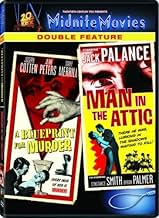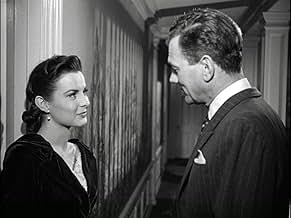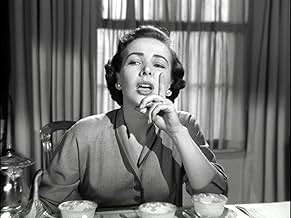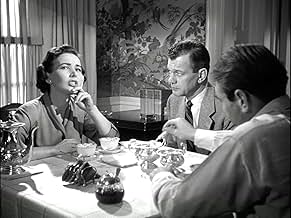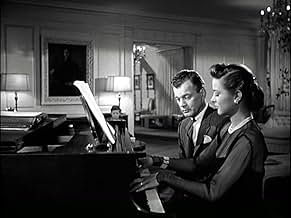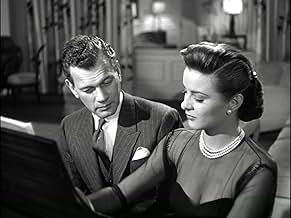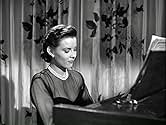Ajouter une intrigue dans votre langueWhitney Cameron suspects his sister-in-law has poisoned his brother and niece, but without proof how does he prevent the murder of his nephew?Whitney Cameron suspects his sister-in-law has poisoned his brother and niece, but without proof how does he prevent the murder of his nephew?Whitney Cameron suspects his sister-in-law has poisoned his brother and niece, but without proof how does he prevent the murder of his nephew?
- Réalisation
- Scénario
- Casting principal
- Doug Cameron
- (as Fred Ridgeway)
- Headwaiter
- (non crédité)
- Judge at Preliminary Hearing
- (non crédité)
- Wheeler - Lynne's Chauffeur
- (non crédité)
- Pesticide Seller
- (non crédité)
- Club Member
- (non crédité)
- Restaurant Patron
- (non crédité)
- Nurse
- (non crédité)
- First Detective at Desk
- (non crédité)
- Waiter
- (non crédité)
- Maggie's Friend at Club
- (non crédité)
- Restaurant Patron
- (non crédité)
Avis à la une
For most of the short movie, it was entertaining. It began to drag a bit in the last third but the film, since it is short, should keep your interest enough to find out who's the killer and how she-or-he did it.
I agree with those posters who felt the ending was a bit disappointing. I was looking for something a little more clever than was presented.
I'd also liked to have seen more scenes with the two supporting actors: Catherine McLeod and Gary Merrill. Both actors were fascinating. McLeod played "Maggie Sargent," the first character in here to suspect foul play after a child's death. Merrill played her husband, "Fred." He also was "Cam's" lawyer.
McLeod is deceptively good-looking and I wish I could see more things she did, but her IMDb resume indicates she mainly acted on television in the 1950s.
Overall, this is definitely worth one viewing. It is usually worth seeing the sexy Peters in her prime before she went into retirement a few years later. She did four films in 1953 and three more the next year, several of them being good film noirs ("Pickup On South Street" and "Niagara.")
A clean, old-fashioned murder mystery, brightly lit, and even including a voyage on a cruise ship to Europe like some Betty Davis movie, or Cary Grant and Deborah Kerr. It's a crime standard at the end of the film noir era, with a terrific star who never quite fit into any genre very well, Joseph Cotten. It's smart and fast and strong and almost believable, at least until the drawing room high stakes of the end, which is just great movie-making.
Cotten plays Whitney Cameron, and he's visiting his niece in the hospital. Quick facts pour on (and are slightly hard to follow at first): she has some strange affliction, her father (Cameron's brother) died of a strange affliction a few years earlier, and the stepmother is sweet as cherry pie, though she plays a demonically fierce romantic piano. Then the niece suddenly dies, and before Cameron leaves the scene, suspicions arise about the stepmother.
By the way, stepmothers can do terrible things that mothers would never do to their own children, like murder them. And so we are led down that obvious path. Soon, however, we know that the movie can't be quite that simple, and another suspect clarifies. The view is left deciding who is playing the better game of "not me." It's good stuff, very good, though constrained and reasonable, too. We don't always want "reasonable" in a film.
The stepmother is excellent, played by Jean Peters, and a helping couple is also first rate, especially Gary Merrill as a lawyer friend. Merrill was in "Where the Sidewalk Ends" and "All About Eve," and is partly why those are great films. Peters plays the cheerful innocent here just as she did in a another pair of masterpieces, "Niagara" (with Cotten) and "Pickup on South Street" (a true noir from the same year as this one).
It's Cotten who drives the movie, however, and he has a tone rather similar to his similar "visiting uncle" role in "Shadow of a Doubt." He is, in fact, a kind of soft-spoken, dependable icon in many movies (and later lots of t.v.) and it's because he's so normal that I think he's less adored. But he's exactly what the movie needs, guiding us first through the police investigation and then the informal one of his own. It had the makings of a tightly woven classic.
Why are there so many films that are quite good but not amazing? I think a little of everything, often, but here it's the story itself that is limiting. A great idea, surely, but a little too familiar in its basic plot, and quite simple. A second plot, or another suspect, or another murder along the way would have been just fine. I think the directing (by Andrew Stone) is competent but lacks vision, and an unwillingness to push the edges a little. It proceeds, and we don't want movies to simply move along. There are, however, some excellent scenes, like one in the police office early on where the two leading men are led from one desk to another, from one group of cops to another, in a flowing, backward moving long take. It's a lesson in first rate cinematography, actually.
And in fact the movie is totally enjoyable, never slow, expertly done, with a good cast.
Joseph Cotten returns to New York to visit his brother's second wife and widow (Jean Peters); his timing proves inopportune, as his young niece goes into convulsions and dies in hospital. Cause of death remains a puzzler until a family attorney (Gary Merrill) reveals that Peters stands to benefit should both her stepchildren predecease her (a stepson may be next on her list). Though Cotten carries a small torch for Peters, his concern for the surviving son wins out, and an autopsy shows the girl died of strychnine poisoning. Peters ends up going to trial but is acquitted. Cotten, however, remains unconvinced, and, unbidden, joins Peters and his nephew on an ocean liner bound for Europe. He hopes to unearth the truth by means of trial by ordeal....
Surprisingly convincing, Peters takes on the role of a reserved society wife (as with most of Howard Hugues' `protegees,' she had more sides to her than the ones her Svengali wanted seen). As her housekeeper who also falls, albeit briefly, under suspicion, Mae Marsh turns up the luminous star of D.W. Griffith's Judith of Bethulia, Birth of a Nation, and Intolerance (she was donning many a lace cap as a string of maids in this Indian Summer of her stardom).
Stone keeps the movie running along at a good clip and keeps tilting the ambivalence to the very end (Is Peters a wronged woman or a murderous monster? Does Cotten have a buried agenda of his own?). To be sure, certain coincidences and turns of plot don't bear prolonged scrutiny, but they're not allowed to become incapacitating lapses of logic, either. Blueprint for Murder meets the minimal production codes for suspense.
Le saviez-vous
- AnecdotesThe ship at sea is the same miniature model used for Titanic (1953), which in turn was used for Les hommes préfèrent les blondes (1953) and Meurtre à bord (1953). The interiors of the dining room and staircase on the ship were also from the same movies.
- GaffesThough set in New York City, the courtroom scene shows two flags by the bench, a 48 star American flag and a California State flag.
- Citations
[spoiler; last lines]
Whitney 'Cam' Cameron: [narrating] On October 10th 1952, Lynne Cameron was convicted of murder in the first degree. Her sentence: life imprisonment. And so to the names of Madeleine Smith, Florence Maybrick, Lydia Trueblood, and all those other young, beautiful, but evil poison murderers was added that of Lynne Cameron.
- ConnexionsFeatured in Under the Boardwalk: The Monopoly Story (2010)
- Bandes originalesAuld Lang Syne
(uncredited)
Traditional Scottish melody
Instumental version played in ship's ballroom as Jean Peters and Joseph Cotten dance
Meilleurs choix
- How long is A Blueprint for Murder?Alimenté par Alexa
Détails
- Durée
- 1h 17min(77 min)
- Couleur
- Rapport de forme
- 1.37 : 1


